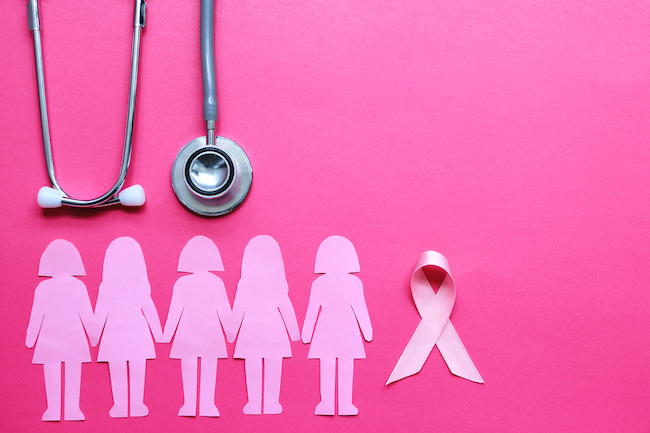Maybe you’ve known someone who was diagnosed with breast cancer after finding a lump. But while a lump in the breast tissue is the most well-known of breast cancer changes, it’s not the only change.
In fact, in many cases, lumps are too small or under enough breast tissue that they aren’t noticed. That’s why regular mammograms are recommended for women after a certain age, since lumps aren’t usually easily self-detected.
But that’s also why it’s important to keep an eye on your overall breast health — there are other breast cancer changes of which women should be aware.
Katie Viola, RN, BSN, breast cancer navigator at Erlanger Health, offers some perspective on what women should watch for and what to do if they notice changes.
Breast changes: The lump
Before we delve into other breast changes, let’s first understand the lumps found in breast tissue. Breast lumps aren’t always a sign of cancer, since they can develop due to infections, injuries and other non-cancerous reasons.
But the reality is, they are often a sign of cancer. That’s why doctors usually recommend women familiarize themselves with their breast tissue and keep an eye out for any changes.
As we mentioned above, though, lumps can often be missed by the untrained eye, so your best defense is age-appropriate screening as recommended by your doctor. Talk with your OB/GYN about what he or she recommends for your personal health needs.
Beyond the lump: Other breast changes
When you’re keeping an eye on your breast health, though, you aren’t just looking for lumps. You should also be familiar with other changes in your breast and alert your doctor if you spot any of them.
Here are some other breast changes to keep an eye out for:
- Swelling of part or all of the breast. While some swelling is normal as part of the hormonal changes in a woman’s menstrual cycle, distinct swelling that sticks around for any length of time is something that should be checked out. Asymmetrical breasts, where one is a different size than the other, are fairly common, but what you’re watching for here is when one changes in size.
- Dimpling in the breast tissue. This change is sometimes referenced as “peau d’orange” because dimpled (or puckered) skin can resemble the surface of an orange. Dimpling of the breast tissue can be caused by a buildup of lymph fluid in the breast, which is a sign of inflammatory breast cancer.
- Breast pain. As women, we’re often accustomed to some amount of breast and nipple pain due to fluctuations in our hormone levels. But if you experience chronic pain or pain that seems to worsen, talk with your doctor. At times, the changes in cells due to breast cancer can lead to pain and tenderness. Pain is an uncommon sign, though, affecting less than 10 percent of those diagnosed with breast cancer.
- Nipple discharge. Discharge is common while breastfeeding, but at other times, it’s a potential breast cancer symptom that should be shared with your doctor. This discharge may be any range of colors, including milky, yellow and even green. While there are other possible underlying causes for nipple discharge, it’s important to have it checked out.
- Nipple retraction or inversion. This change is exactly as it sounds — the nipple reverses inward into the breast. This is another change that can occur during your menstrual cycle, but if it’s a new change to you, you should have it checked out.
- Redness or a change in texture. Breast cancer causes changes in the skin cells that can lead to a flushing or redness of the breasts or even texture changes. This may emerge in the form of scaly skin that feels or looks sunburnt, or as skin thickening of any part of the breast. The change in color may lead to your breast looking bruised.
If you notice breast changes…
If you notice any of the breast changes we’ve outlined above, schedule an appointment with your doctor to review what you’re experiencing. Don’t panic. Many of the changes are also common with other underlying causes, including infections, illness and your menstrual cycle, so their source may be benign.
But because there’s a possibility they could indicate breast cancer is present, it’s much better to be safe rather than sorry. Discovering breast cancer at an early stage can help ensure it’s diagnosed and treated effectively.
Your doctor will talk you through your changes or symptoms, examine your breasts and may suggest diagnostic testing such as a mammogram or ultrasound.
A mammogram remains one of the most effective tools at detecting breast cancer. Need to schedule your mammogram? Call (423) 778-PINK (7465) to schedule an appointment at one of three convenient Erlanger Imaging locations. In Western North Carolina, talk to your doctor to request a mammogram.







